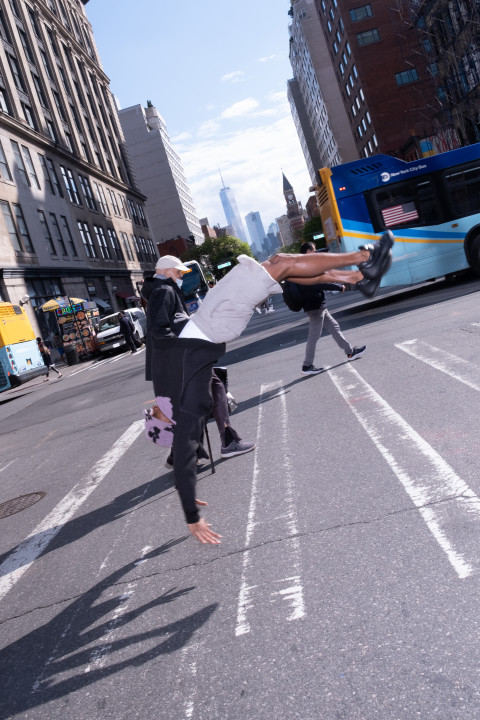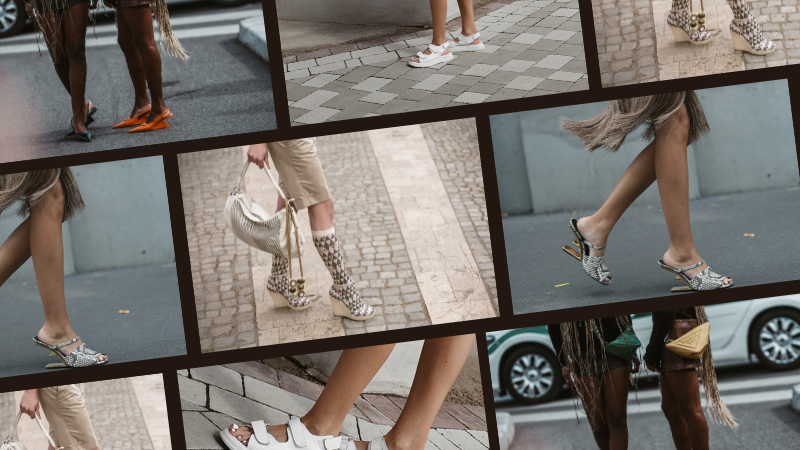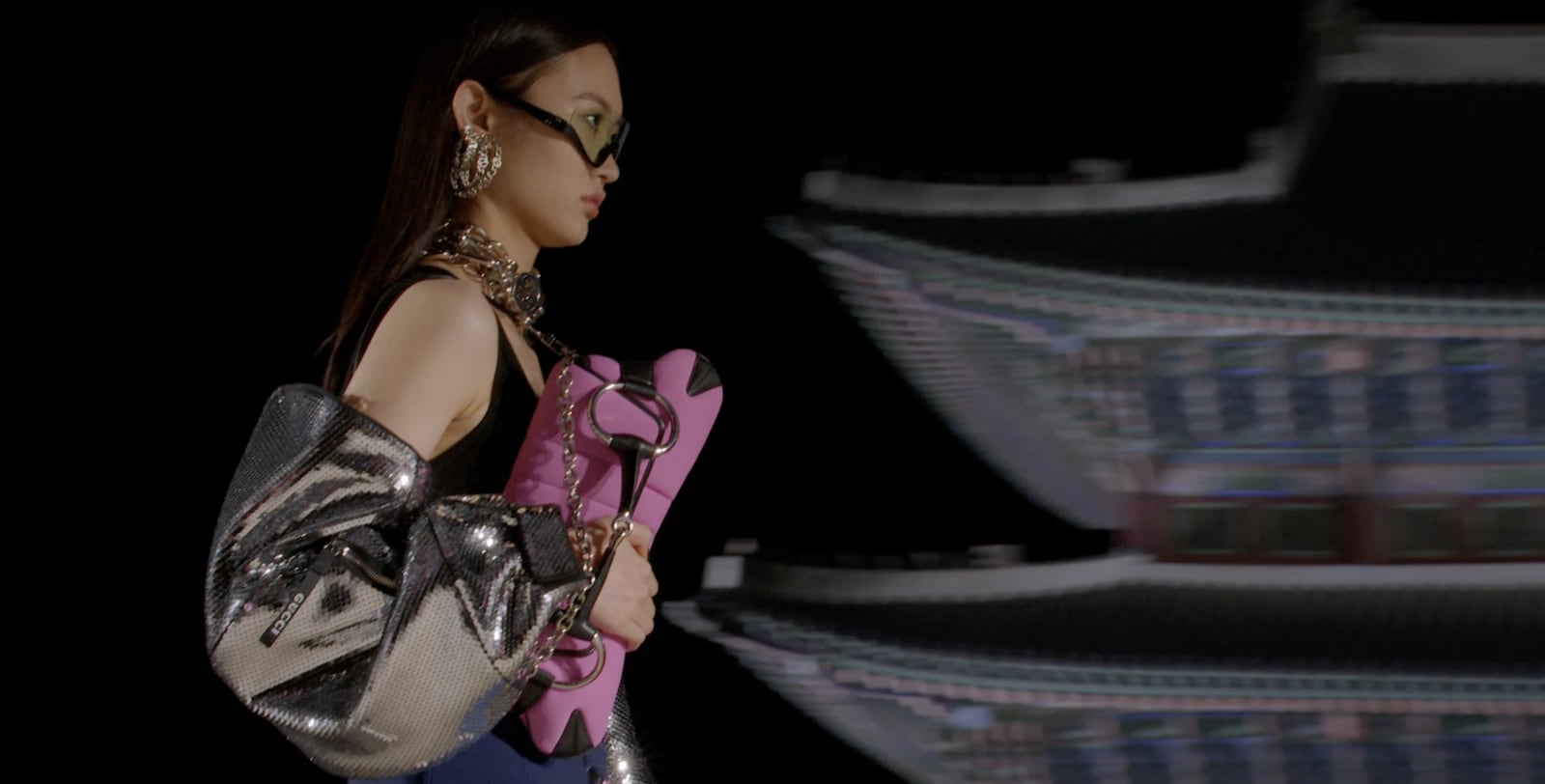Jonathan Anderson Never Wanted to be a Star. And Yet Here We Are.
The designer discusses faffing about, fashion fantasies, and remaining at the top of one’s game while settling in to a new era.

On the surface, the fashion industry is about change. Ins and outs, minis to maxis, heels to flats—you’ve heard it all before. The trend cycle dictates that for something to be wanted it has to be different. Fifteen years into his eponymous brand and a decade into his tenure at Loewe, Jonathan Anderson is doing something quietly radical: “becoming a little bit more settled.” Less sharp pivots, more considered and emotional evolutions.

His last two JW Anderson collections delved into his own archive for the first time, producing “reduced” and resplendent reworks of his most lasting designs; his latest accessory, the Bumper-Hike sneaker, is an extension of his wildly popular Bumper bag. “My whole thing is about how do you build a brand for the long term,” he says, settled into a corner of the Bowery Hotel in New York.But Anderson’s “settling in” phase doesn’t mean settling. He’s working on costume design for two films with Luca Guadagnino (“a dream come true” he says of , out this August with Zendaya and Josh O’Connor; and , with Daniel Craig, currently shooting in Rome), finalizing the SS24 season he’ll present in one month’s time in Milan, and revving up for a party at the Boiler Room with SSENSE, a bar he started frequenting in his 20s and admires for its ability to withstand the test of time. “It’s such an institution—and it hasn’t ever changed. The pool tables are still there, the people are still there,” he says. It’s not hard to imagine that 20 years from now, Anderson will still be here, indulging the truest fashion fantasy: product that fans the flames of desire. Only the strong stay the same.
I wanted to start talking about New York, where we shot this editorial and where we’re hosting our party. I read that you came to New York to study at Juilliard. True?It says that on your Wikipedia page. We’ll need to make a correction.Tell me a little bit about the faffing around. What did you do?The last time we did an interview here, in 2019, we talked a little bit about how you define JW Anderson versus Loewe, and you said that JW Anderson is a cultural agitator. Do you still feel that way?
No, not true.Oh, really? I’ve never read that. Yeah, it’s not true. I went to Washington DC first because there was an acting course I wanted to go to in New York at the Actors Studio. At that period of time, the class was actually being held in Washington DC, so I came to DC before I started university. But it wasn’t Juilliard. I interviewed at Juilliard, but I didn’t get in. After Washington DC I came to New York. I dropped out [of the acting program] and then I kind of faffed about around here and partied.Faffing around was like a lot of clubs, a lot of partying, a lot of drinking. A lot of finding oneself. I got out of Ireland and it was amazing just to get out of a village. By the time I went to university in London, I was going back and forth from New York every couple of weeks because I had friends here. I love New York, but I wouldn’t live here.Yes. I think there’s always a strange bit of anxiety in JW Anderson. I like things that are always slightly off. There is a questioning in the brand, and there is always a bit of a brat in it. I still believe that and I still feel like that.

Have the things you’re questioning changed?Your last two shows for FW23 menswear and womenswear had a sort of retrospective quality, looking back over the past 15 years of the brand. Why did you want to revisit your past?Did you have any realizations in the process of revisiting your past and seeing the things you were making at 25?
Well, if you had asked me three weeks ago, I would’ve been like, “Everything’s becoming a little bit more settled. I’m becoming older. I’m becoming more mature, less childish.” But then the last two weeks are, like, full meltdown []. And I feel like I want to be energetic. I want lust for life. I think in a weird way JW Anderson is about combinations and contradictions. It’s a very personal journey for me, even though the collection has never been about the iconography of myself. It’s more about the fantasy of what I would want to wear.I wanted contradictions. I’ve always said I would never look back, but I looked back and I liked it. In some way, I think it was more about digging into someone else’s archive—[the dancer and artist] Michael Clark—and then feeling like I can’t dig into someone else’s archive if I don’t do the same to myself. I also wanted it to be a bit like, “You think you’re new, but you’re not.” Not in a brat way, but I think sometimes people forget what JW Anderson’s done and we were doing it in a period where menswear was really not cared about in mainstream fashion. We were also doing womenswear that was very small at one point that people forgot about. Those collections were part of me wanting to resurface things that I felt were important.The great thing is that I have realized I don’t want to be 25 anymore []. In the design, I think I fell in love with things I had done that I had completely rejected at the time I made them. We went incredibly reduced with the collection and with the show—I think it was the most polished show we’ve ever done. I felt confident to be like: This is who we are, JW Anderson. And I actually really love the clothing in it. I’ve always wanted to work with Michael Clark and he’s always said no, and finally he said yes. There are hoodies in the show that I’m like: I want to have them to wear every day. I need to wear them every day. Like the one that says “The witch.”My team will probably disagree with this comment, but I feel like I’m slightly relaxing into the idea of the world that I have and the responsibility that comes with it and letting go slightly of the idea that “Oh my god, the show has to be this thing.” That idea that we need attention and we need it to be better than the last show and better and better each show after. I’ve realized that we have our own path. I have been going for 15 years and I think JW Anderson has always been consistent. It has never been like bam [] and then bam []. I think there’s a lot of that shit happening out there and rather than be a star, I’ve always wanted to be part of the woodwork.


What is inspiring you now?The state fashion industry is so fractured at the moment as well. Ideas, trends, garments are just whipping by.—like five minutes.The pang of desire has to strike.The Milan Fashion Week SS24 calendar came out on Wednesday, and your show will be there again. Can you give us a little teaser of what to expect?Cornishware?
I think what is inspiring me is letting go a little bit. Last year and the beginning of this year was an incredibly heavy amount of work. We had the Super Bowl [with Rihanna], we were working on looks for Beyoncé, we had to open a store for JW in Milan, and we have an exhibition that we’re doing in September. The shows over the past two years have been very heavy. It was a period where I was trying to do a change of direction. I’ve been 10 years at Loewe, and I’ve had JW Anderson for 15 years. At the moment I’m inspired by this idea of just trying to relax into the process of work and not let the work completely devour you. When you are an obsessive like myself, it’s hard because I want every show to be the best show. It’s not that I don’t want each show to be the best and beat the last show, but I am feeling a little like I am ready to detach a bit so that you don’t get consumed by the character.People like things that have very short windows now, and I don’t operate like that. My whole thing is about how do you build a brand for the long term. Nowadays it’s like you open a business and it needs to be a $500 million business in—Five minutes or less. And then there is zero personality for the product. I have no idea who the person is. I have no idea what they stand for. And it’s just celebrity. What is the fashion history in it? What is the fashion culture that you’re putting out there? How do you enrich the culture? I need fashion to be . It’s not always just about money or how big or how famous you can be. Fashion is something you do that has the potential to change culture, to infiltrate ideas and influence people.Every so often there’s like a glimmer of light where you see something and you’re like, “Oh my God, that’s an interesting take.” But I feel that happens less and less now. People either have been consumed by the idea of working for money or consumed by the idea of fame and they don’t actually think of each item as a product. I started off as a product person. I did windows with Andrew [Webster, the brand director at JW Anderson] at Prada, and it was about obsessing over a product. . When I look out in fashion, I see smaller and smaller amounts of obsessions. Not that I’m a big consumer of clothing, but I still want to have the fantasy of wanting something.Yeah, at the moment I’m obsessed by the [JW Anderson Michael Clark] hoodie and these [Loewe] boots. That’s it, and I’m fine with that right now. But I’m hoping that things may start to change as fashion goes in waves.Cornishware.Yeah. Cup of tea. Anyone for tea?




